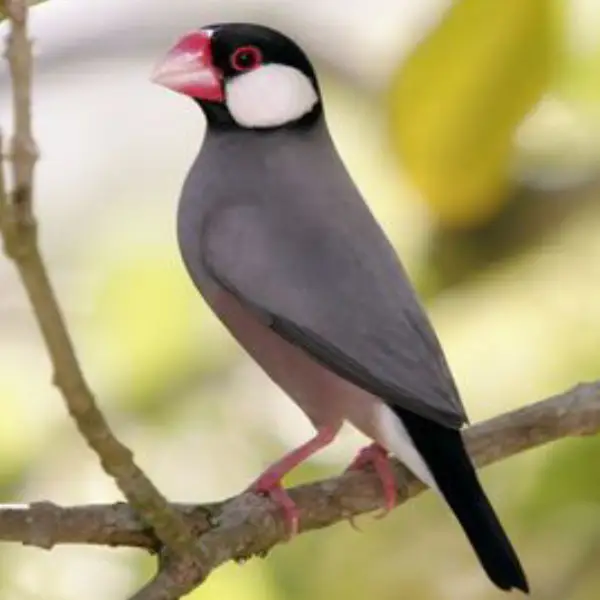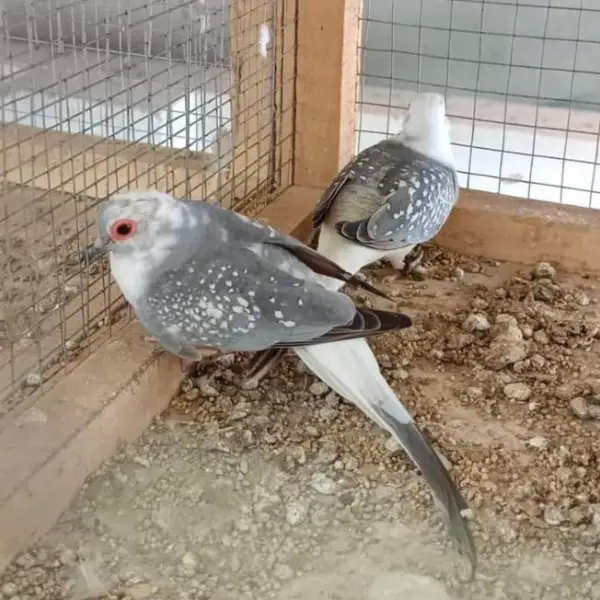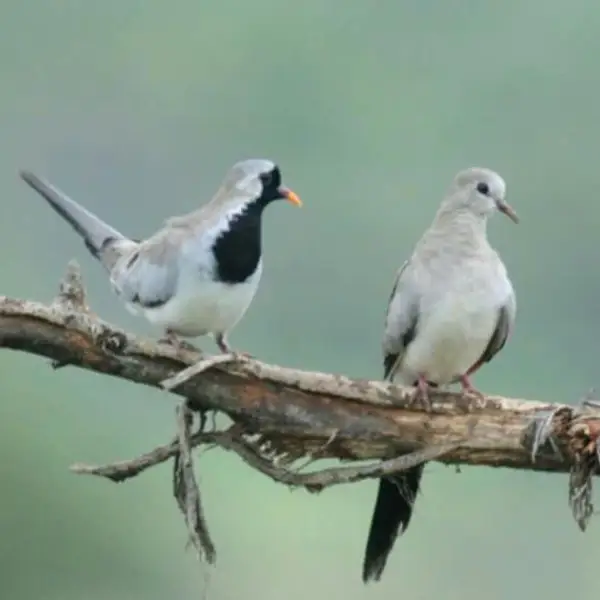Free shipping order over 20,000
Gray Jawa
₨ 4,375 Original price was: ₨ 4,375.₨ 3,500Current price is: ₨ 3,500.
-
-
-
-
- Scientific Name: Padda oryzivora
- Size: Approximately 13-15 cm (5-6 inches) in length.
- Color: The Gray Jawa features a sleek, smooth gray plumage. The body is predominantly gray, with a slightly darker shade on the wings and back. The face is usually marked with a distinctive white cheek patch, which contrasts sharply with the gray feathers. The underparts may be a lighter shade of gray, blending into the rest of the body.
- Beak: The beak is stout, conical, and typically a pinkish or reddish color, suited for seed eating.
- Eyes: The eyes are dark, usually black, which contrasts well with the gray and white coloration of the face.
- Legs and Feet: Legs and feet are generally pale pink or flesh-colored.
-
-
-
SKU: REF. LA-5766-9-1-1-1-1-1-1-1-1-1-1-1-1-1-1-1-1-1-1-1-1-1
Categories: JAWA FINCH, Uncategorized
Tag: jawa finch
Share
Share on facebook
Share on email
Important Keys:
Habitat
- Distribution: Native to the islands of Java, Bali, and Bawean in Indonesia, but widely introduced in other parts of Southeast Asia, the Pacific Islands, and even Hawaii due to their popularity as pets.
- Environment: In the wild, they favor open grasslands, rice fields, and agricultural areas. In captivity, they adapt well to aviaries or large cages with plenty of room to fly and interact with other birds.
Diet
- Primary Food: The Gray Jawa primarily feeds on seeds, with a preference for grasses and cereals. Millet is often a staple in their diet when kept in captivity.
- Supplementary Food: They also enjoy fresh fruits, vegetables, and occasional protein sources such as insects or egg food, particularly during the breeding season when they require additional nutrition.
- Feeding Behavior: These birds are ground feeders and are often seen foraging for seeds on the ground. In captivity, they are provided with a mix of seeds in feeding dishes.
Breeding
- Breeding Season: In the wild, breeding typically occurs during the wet season, aligning with food availability, though in captivity, they can breed throughout the year if conditions are favorable.
- Nest Location: They build their nests in tree hollows, crevices, or dense foliage in the wild. In captivity, they accept nest boxes lined with soft materials such as coconut fibers or grass.
- Egg Quantity: Clutches generally consist of 4-6 eggs.
- Incubation Period: The eggs are incubated for about 12-15 days, with both parents participating.
- Fledging: Chicks usually fledge at around 21-25 days after hatching and are independent a few weeks later.
Lifespan
- In the Wild: Java Sparrows typically live around 5-7 years in the wild.
- In Captivity: With proper care, the Gray Jawa can live up to 8-12 years or even longer.
Behavior
- Social Structure: Java Sparrows are social birds that thrive in groups. They are often kept in pairs or small colonies in captivity. While generally peaceful, they may exhibit territorial behavior during the breeding season.
- Vocalization: The Gray Jawa has a soft, melodious chirping sound. Their song is rhythmic and often used in social interactions and courtship displays.
![]()
Be the first to review “Gray Jawa” Cancel reply
Related Products
-
-14%
Green Star Finch
₨ 17,500Original price was: ₨ 17,500.₨ 15,000Current price is: ₨ 15,000. -
-20%
Common Gouldian Finch
₨ 12,500Original price was: ₨ 12,500.₨ 10,000Current price is: ₨ 10,000. -
-25%
Common Cut-throat
₨ 24,000Original price was: ₨ 24,000.₨ 18,000Current price is: ₨ 18,000. -
-21%
Euro Bengalese
₨ 3,800Original price was: ₨ 3,800.₨ 3,000Current price is: ₨ 3,000. -
-20%
White Zebra Dove
₨ 43,750Original price was: ₨ 43,750.₨ 35,000Current price is: ₨ 35,000. -
-42%
Silver Pied Dove
₨ 12,000Original price was: ₨ 12,000.₨ 7,000Current price is: ₨ 7,000. -
-20%
Diamond Pied Dove
₨ 6,250Original price was: ₨ 6,250.₨ 5,000Current price is: ₨ 5,000. -
-20%
Cape Dove
₨ 37,500Original price was: ₨ 37,500.₨ 30,000Current price is: ₨ 30,000.
Sign Up for Exclusive Birds Care Tips and Offers from Phool Panchi
Company links
Category
Contact
© 2024 Phool Panchi | Developed By v3Studio
















Reviews
There are no reviews yet.